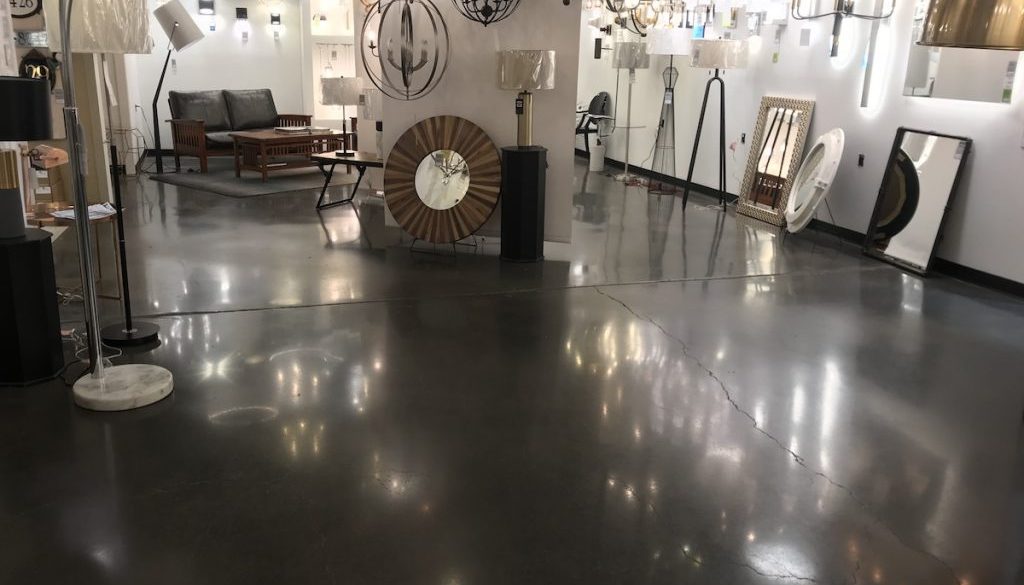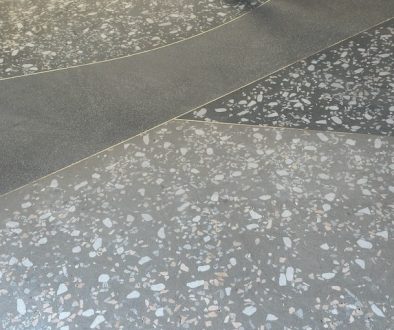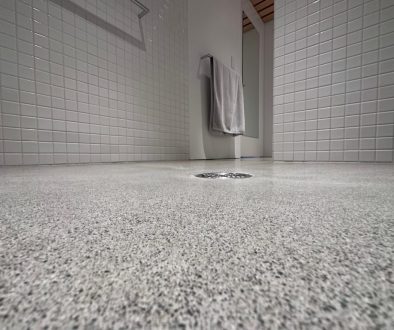Restoration of concrete slabs
Can this slab be used as a finished floor?
The team at Victoria Stone Design has made a career out of restoring old concrete and turning it works of art. Managing expectations is critical as not every slab can be turned into a what the customer desires. Concrete is a canvas, it isn’t a blank canvas – there are many variable to consider such as tile and grout lines, contaminants, and carpet tack strips. Renovations usually include moving plumbing, which ends up cutting into the concrete and the resulting patches. All this is fine in a commercial brewery that wants “industrial sheik” on a budget, but often it can be contrived in a residential setting.
There are so many manufactures of grinders these days that a lot of flooring contractors are starting to polish concrete. With 25 years experience, Victoria Stone Design knows that the details can make or break a project. We spend time making sure the patches and repairs look good. Often bagged products that bond well contain polymer and have a base colour that is not at all similar to the concrete slab. We spend the time to tint and colour match the patch. We sign the NDA’s with the batch plants so we can get the proper mix designs and source the sand and aggregates. Sometimes this isn’t necessary, and industrial sheik means that contrasting patch will look better, we know when this is the right call. Restoring concrete floors is not as straight forward as one might think, with over 500 grinding projects under our belt, we know what the right call is for you.
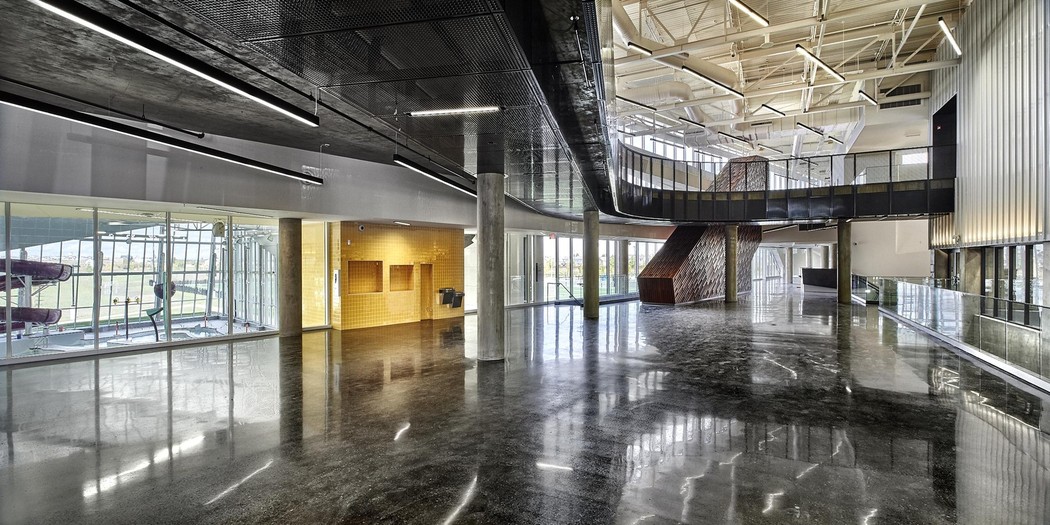
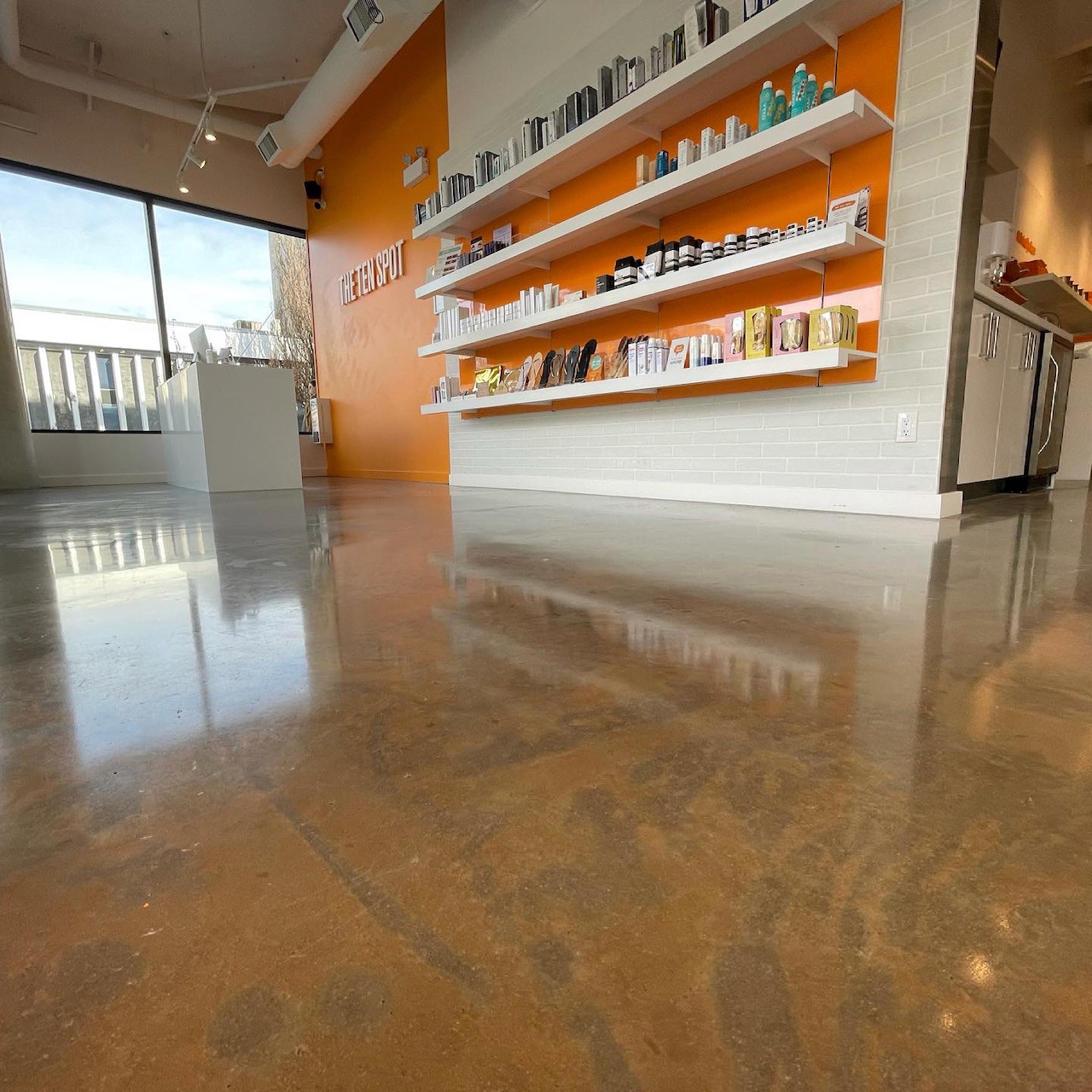
Concrete restoration experience
Everyone starts somewhere, and with finished concrete floors it often means learning on the customers dime. Concrete is a fickle beast, we love the natural beauty and random nature, this is what also causes heartache.
We have been restoring concrete floors since 1998, using concrete as our canvas for 25+ years. A few notable projects are the Morris Printing building, that is now Urbana Kitchens, Cook Street Liquor, Mclaren Lighting, Giant Bikes, Patagonia, Arcteryx, Little Jumbo and MEET on Blanchard.
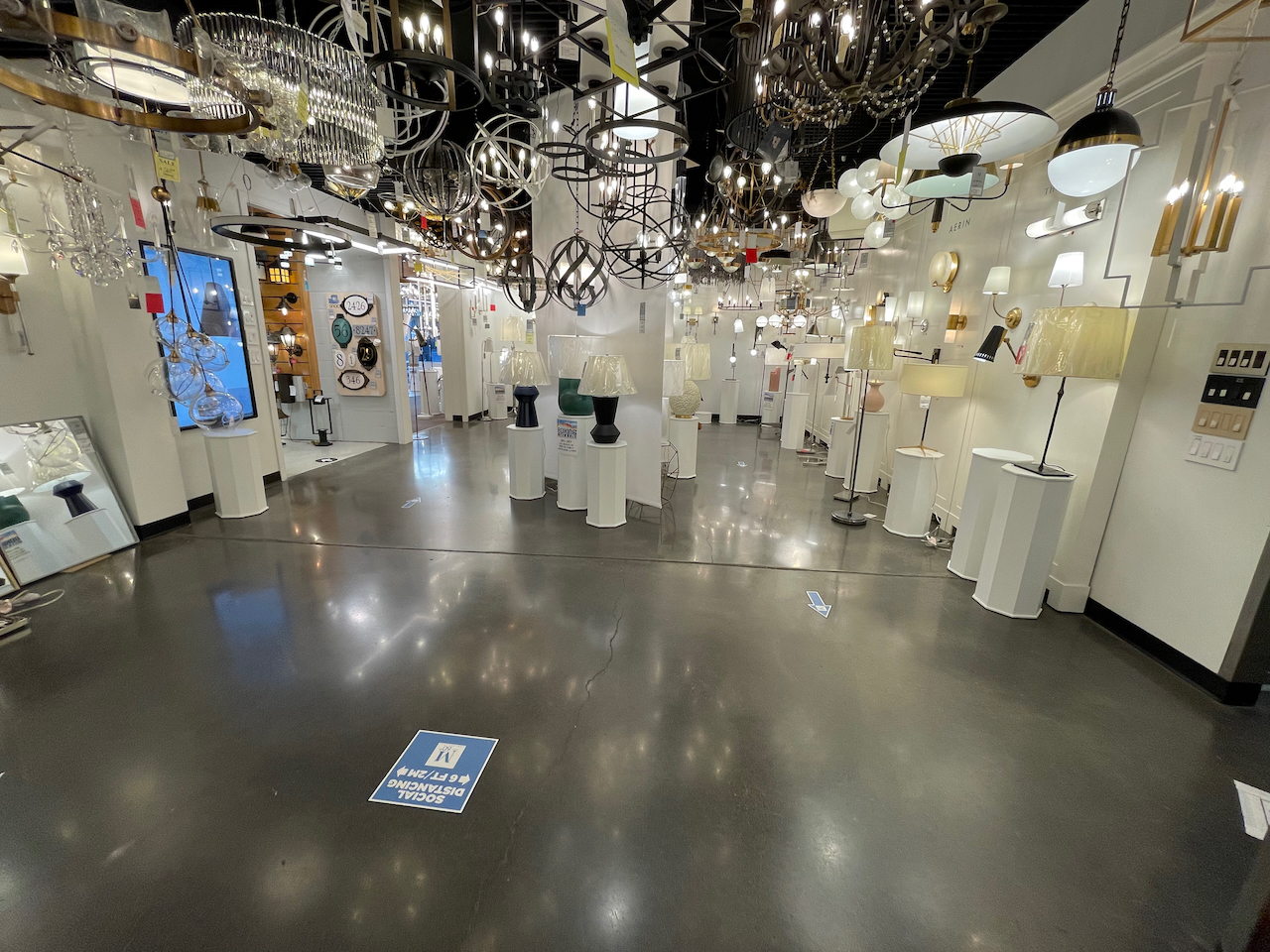
Mclaren Lighting
Mclaren lighting polished a section of the showroom floor way back in 2006. A topical black dye was used to darken the concrete for contrast. Back then the client was concerned about the durability of a topical stain, the test of time has proven that this is not a worry in the slightest.
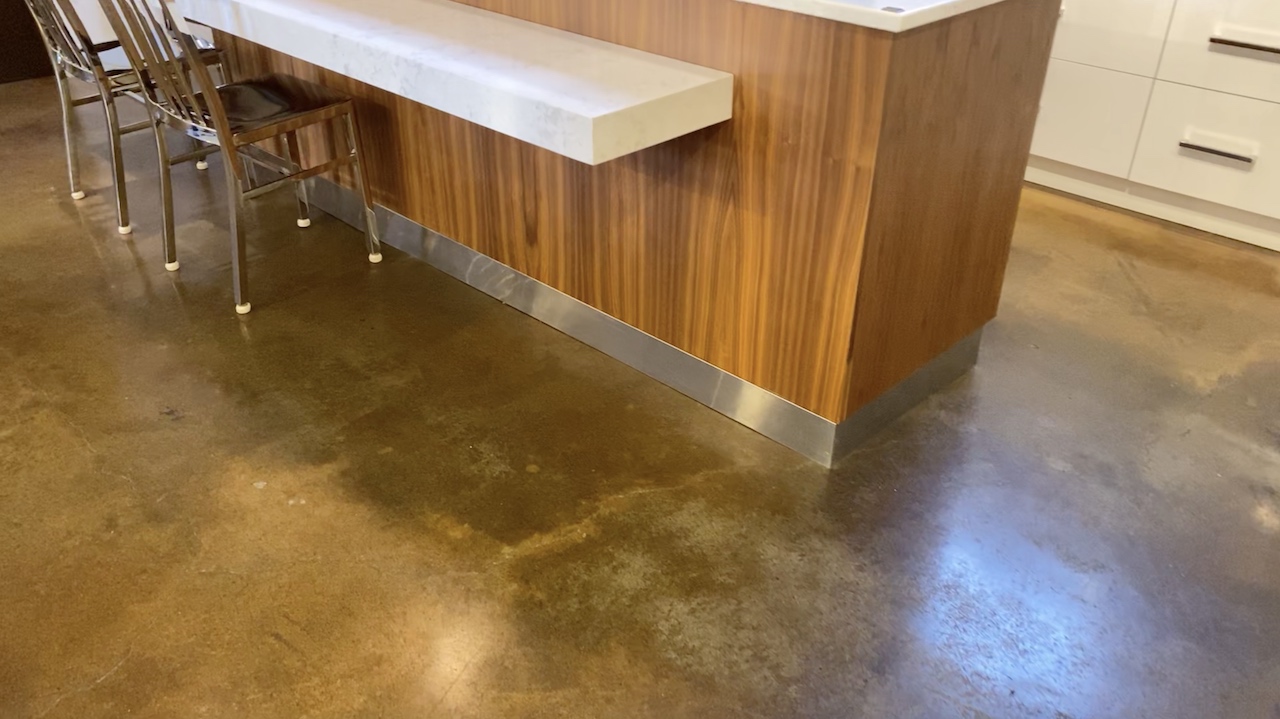
Urbana Kitchens
Urbana was originally the old Morris Printing building. The 3200 sq/ft space floor was deeply stained from the dyes and printing presses. Even after heavy grinding, there was so much oil & staining it would be hard to hide. Victoria SD recommended an acid based dye to create a patina and work with the natural character or the floor. After all these years the floor still looks like the day we completed it, go in and check out the awesome showroom if you’re looking for kitchen ideas. The address is 1745 Blanshard Street.
RESTORATION PROJECTS
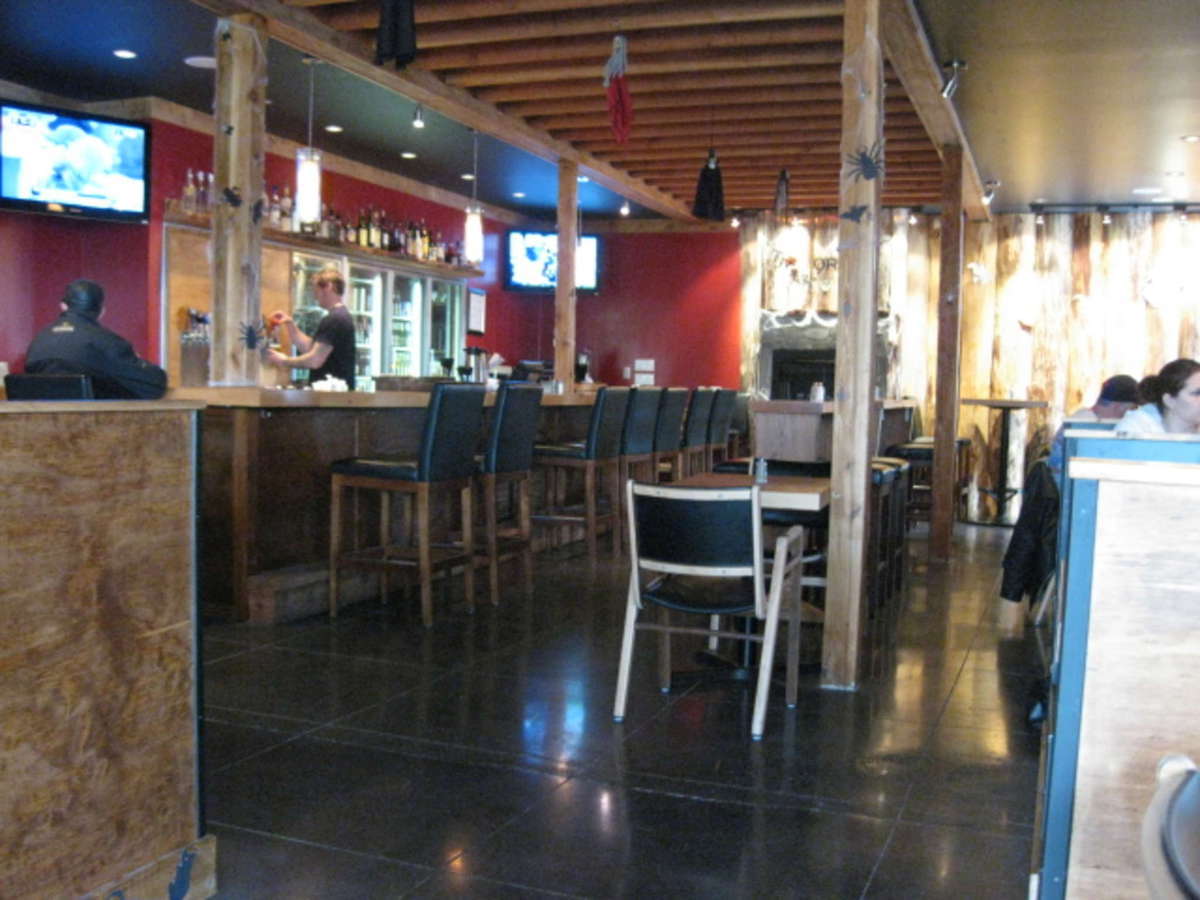
McRaes Restaurant
McRaes Bistro is a West Coast Style Bistro located close to UVic and Camosun College. This busy location needed a cost effective, durable, and low maintenance floor. The old concrete slab was so broken up and patched, it looked like an overlay was needed. After talking with the client, the Victoria Stone Design team decided on moving forward with the restoration. First the slab was extensively patched and ground, next it was dyed black to blend all the various patches and slab pours. The final stage was polishing and cutting faux grout lines into the slab, to break up the surface and trick the eye into seeing each tile as unique slabs. The result was terrific, the food is better, check them out – Mcraes Bistro.

Giant Bikes Victoria
Giant Bikes Victoria, was a massive undertaking and concrete restoration. A commercial building can go through many different changes over the years. Layers of floor coverings tend to get piled on top of each other. When un earthing these many layers, there are usually plumbing cutouts, carpet tack strips and different levels that need to be patched, flattened and blended. This particular floor started out with 16 grit metal bond diamonds for a really aggressive cut to remove glues, adhesives, and other floor coatings. The floor was polished to 100 grit resin diamonds and a black dye was applied. At this point the floor was densified, polished to 800 and finished. More video and pictures of Giant Victoria here.
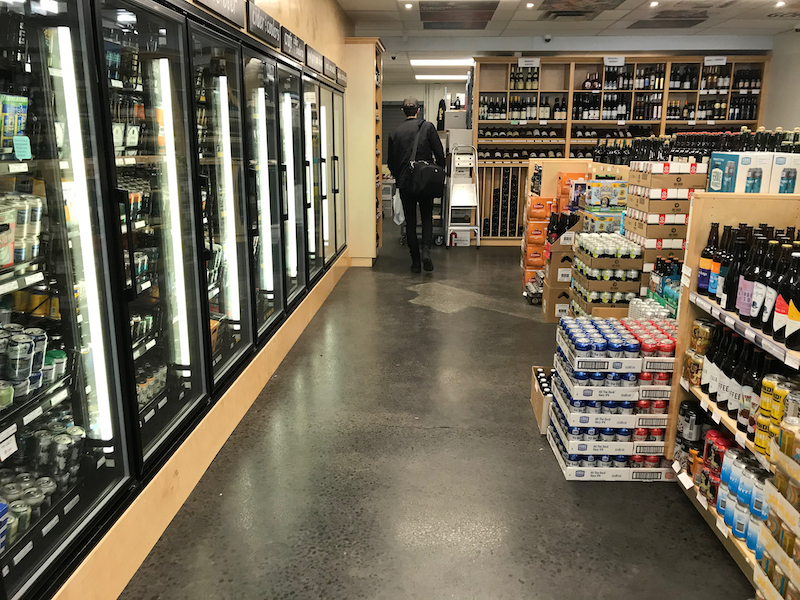
Cook Street Liquor
The old Royal Bank in Cook Street was renovated and turned Cook Street liquor store. This super high traffic space was the perfect candidate for polished concrete and a slab restoration. The cost effective treatment offered a durable, easy to clean surface that checked all the boxes.
Little Jumbo

The concrete floor in Little Jumbo does not stand out, nor was it meant to. It was acid stained and polished to only 100 grit, leaving a low gloss, durable surface. Victoria Stone Design created a custom panel that was set into the floor at the entrance. The Jumbo logo was water cut out of brass and placed into a mold. 1 ct pennies were then placed randomly in the mold and polished out. See more pictures and details about this project here.
PATAGONIA – 2013
Patagonia is a company that is well know for its ethics in business. It is not surprising that they choose to re use the existing concrete flooring rather than purchase and other flooring materials to put on top. If your looking for outdoor wear, this is the company to support, Yves Chouinard is a legend and has paved the way for Capitalism 2.0
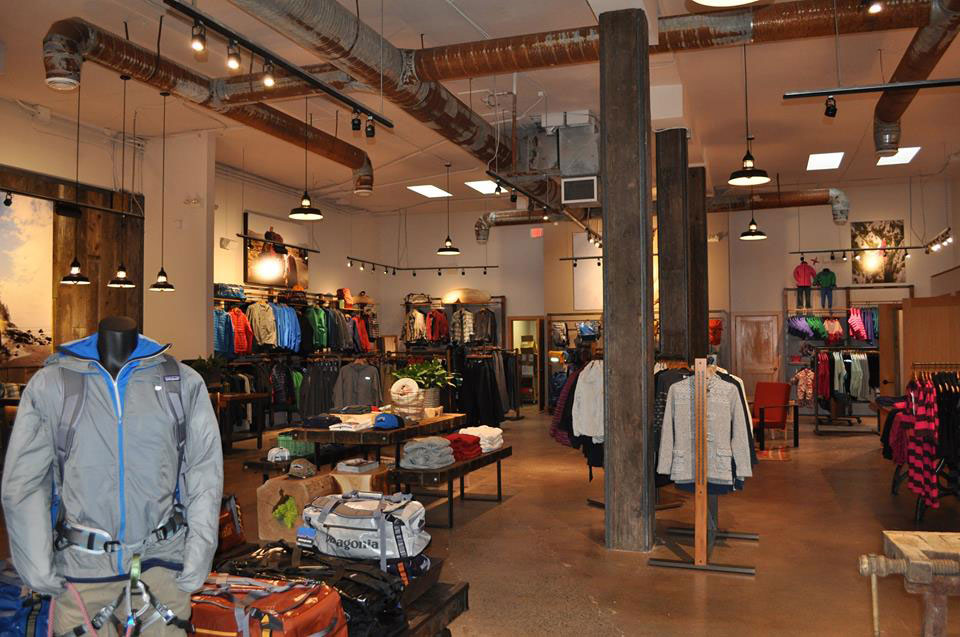

The Ten Spot
The Ten Spot first floor slab for the Black and White building on Fort Street. As a result, all the pipe was store and cut on the floor. The rust from the pipe created in a extreme patina that looked like an acid stain. Our team recognized this natural beauty and chose to work with it as a happy accident, it was the right call.
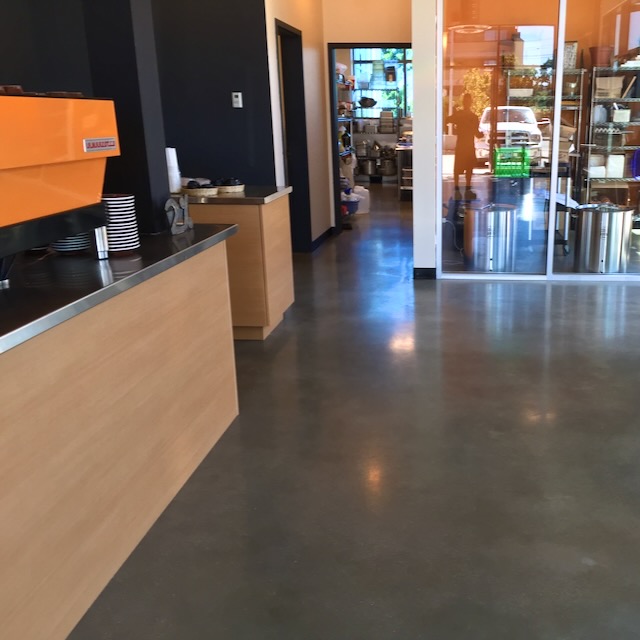
2% Jazz
Cafe’s commonly utilize polished concrete for the high traffic environment and great look. Sam Jones is a pioneer in craft coffee pioneer in Victoria, and one of our favourite people.

Altitude Fitness Whistler
As experts in our field, we get asked to travel all over BC to grind polish and restore old concrete slabs. Most gyms these days use rubber mattes that are randomly place to create mobile workout stations. Polished concrete is perfect underneath as it can be easily cleaned once the mattes are removed.

Overlays to resurface
Sometimes it is just not possible to save the existing concrete slab. Self-leveling overlays are an ideal way to establish a uniform, new, smooth surface for rough, pitted or damaged concrete floors, and bring into conformity different sections of concrete either in adjacent rooms of the same building, or that have been created by large plumbing, electrical or structural repairs made to the existing concrete. This situation is commonly encountered in basements of old homes, and on ground floors of old buildings in metropolitan areas, that are undergoing renovation or remodelling for new residents, owners or tenants.

